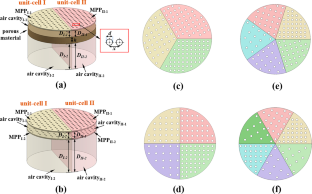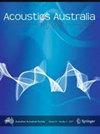Optimization of the Acoustic Performance of a Composite Multi-cell Sound Absorber
Abstract
The sound absorption coefficient (SAC) of a composite multi-cell sound absorber in the low- and mid-frequency range is investigated by using experiment and numerical method. The composite sound absorber includes a MPP (micro-perforated panel) layer, a porous material layer, and an air cavity layer. The sandwich acoustic structure consists of an air cavity layer in between two MPP layers, which is backed by another air cavity layer. Maa’s model was used to describe the MPP layer, and the porous material layer was established by using Delany and Bazley’s model. The transfer matrix method (TMM) was used to calculate the surface impedance of each acoustic unit-cell of the composite multi-cell sound absorber, and the SAC of the composite multi-cell sound absorber was predicted by using the equivalent circuit method. Finite element (FE) models of the composite multi-cell sound absorbers are presented, and their sound absorption coefficient was measured by using an impedance tube method. The measurement data demonstrate the validity of the prediction results and are used to analyse various acoustic characteristics that depend on the structural parameters of each acoustic unit-cell. Furthermore, an optimal combination of the structural parameters of the composite multi-cell sound absorber can be realized by using the genetic algorithm (GA). The effect of the number of the acoustic unit-cells with different perforation ratios of the MPP layer and the depth of the air cavity layer is presented. They are the main design parameters that can control the SAC in different frequency ranges. The results also show that the SAC of the composite multi-cell sound absorber can be adjusted by increasing the number of the acoustic unit-cells and using the optimized design of the air cavity layer.


 求助内容:
求助内容: 应助结果提醒方式:
应助结果提醒方式:


